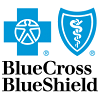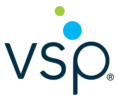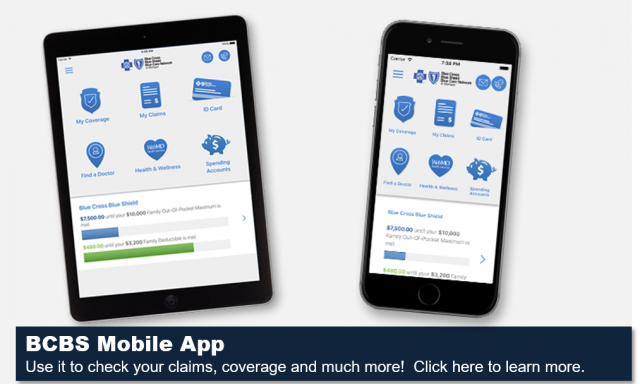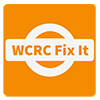2024 Open Enrollment
Open Enrollment is an annual process that provides employees the opportunity to enroll in benefit plans or make changes to existing coverage effective January 1, 2024. Employees are encouraged to review this information to learn about all benefit offerings and make an informed decision in order to select the benefits that best fit their needs. Now is also a great time to review and update beneficiaries.
All employees must complete the Benefits Enrollment Form no later than Monday, October 23, 2023!
Medical Insurance
Your medical benefits provide comprehensive coverage for planned and emergency care. Each plan’s provisions vary, so you have flexibility when deciding which option is right for you and your family. All of the medical plans provide coverage for the same types of medical services; however, the employee contribution rate for each plan varies based on how the plan pays for those services.
When selecting a plan, think about how frequently you visit the doctor, whether you need out-of-network coverage and how you want to balance your employee contribution rates with what you are required to pay for medical services
WCRC offers a choice of two medical plans administered by Blue Cross Blue Shields (BCBS): PPO 4 and a PPO 7.
Plan Comparison
| Plan Feature | PPO 4 | PPO 7 |
| Deductible | $500 Individual/$1,000 Family | $500 Individual/$1,000 Family |
| Annual Coinsurance Maximums | $1,500 Individual/$3,000 Family | $1,000 Individual/$2,000 Family |
| Annual Out-of-Pocket Maximums | $6,350 Individual/$12,700 Family | $6,350 Individual/$12,700 Family |
| Coinsurance Amounts | 20% of approved amount for mental health care and substance abuse treatment
20% of approved amount for most other covered services |
10% of approved amount for mental health care and substance abuse treatment
10% of approved amount for most other covered services |
| Office Visit Copay | $20 Copay | $20 Copay |
| Emergency Room Copay | $100 Copay | $100 Copay |
| Online Doctor Visit Copay | $5 Copay | $5 Copay |
Deductible Copay Example PPO 4
Deductible Copay Example PPO 7
2024 Employee Contributions (per pay)
| Tier | PPO 4 | PPO 7 |
| Single | $6.35 | $18.10 |
| 2-Person | $15.24 | $43.45 |
| Family | $19.05 | $54.31 |
2023 Employee Contributions (per pay)
| Tier | PPO 4 | PPO 7 |
| Single | $6.18 | $17.39 |
| 2-Person | $14.83 | $41.74 |
| Family | $18.54 | $52.17 |
Coordination of Benefits
Coordination of Benefits (COB) is how health care carriers coordinated benefits when members or their dependents are covered by more than one health care plan. Under COB, carriers work together to make sure members receive the maximum benefits available under their health plan. If an employee or any of their dependents have more than one health insurance plan it is their responsibility to notify BCBS and to complete the Coordination of Benefits Form.
Medical Buy-Out
If an employee and their dependents have medical coverage elsewhere, they can choose to waive medical insurance and receive a buy-out of $75 per pay period (up to $1,950 per year). Proof of coverage must be provided in order to receive the buy-out. Employees and eligible dependents will still be eligible to participate in the flexible spending accounts, dental and vision insurance.
24/7 Online Health Care
WCRC medical plans include 24/7 online health care through Blue Cross Online Visits™. With online health care, individuals can see a U.S. board-certified doctor anytime, anywhere. No appointment needed. Use a mobile device to log into the BCBSM Online Visits™ app, or a computer to log in to https://www.bcbsmonlinevisits.com/landing.htm.
Prescription Drug Coverage
| 90-Day Retail Network Pharmacy | *In-Network Mail Order Provider | In-Network Pharmacy (not part of the 90-day retail network) | Out-of-Network Pharmacy | ||
| Generic Prescription Drugs | 1 to 30-day period | $0 Copay | $0 Copay | $0 Copay | 25% prescription drug out-of-network retail pharmacy provider |
| 31 to 83-day period | No Coverage | $0 Copay | No Coverage | No Coverage | |
| 84 to 90-day period | $0 Copay | $0 Copay | No Coverage | No Coverage | |
| Brand Name Prescription Drugs | 1 to 30-day period | $30 Copay | $30 Copay | $30 Copay | $30 copay plus an additional 25% prescription drug out-of-network retail pharmacy provider |
| 31 to 83-day period | No Coverage | $30 Copay | No Coverage | No Coverage | |
| 84 to 90-day period | $30 Copay | $30 Copay | No Coverage | No Coverage |

HELPFUL LINKS
Register & Access Online Account
Understanding Your Health Insurance Plan
RELATED DOCUMENTS
BCBS Benefit Guide
Benefits-at-a-Glance PPO 4
Benefits-at-a-Glance PPO 7
Summary of Benefits and Coverage PPO 4
Summary of Benefits and Coverage PPO 7
myStrength by Livongo
Behavioral Health Options
Take Charge of Your Diabetes
Dental
Dental insurance provides coverage for many dental services that you and your eligible dependents may need. Each plan’s provisions vary, so you have flexibility when deciding which option is right for you and your family.
WCRC offers the choice of two dental plans administered by Delta Dental a base and an enhanced.
Plan Comparison
| Plan Feature | Base | Enhanced |
| Deductible | $25 Individual/$75 Family | $25 Individual/$75 Family |
| Maximum Payment | $1,000 (per person, per calendar year) | $2,000 (per person, per calendar year) |
| Diagnostic and Preventive Services | 100% | 100% |
| Basic Services | 100% | 100% |
| Major Services | 50% | 50% |
| Orthodontic Services | 50% | 50% |
2024 Employee Contributions (per pay)
| Tier | Base | Enhanced |
| Single | $3.05 | $3.86 |
| 2-Person | $7.31 | $9.26 |
| Family | $9.14 | $11.57 |
2023 Employee Contributions (per pay)
| Tier | Base | Enhanced |
| Single | $3.00 | $3.66 |
| 2-Person | $7.20 | $8.78 |
| Family | $8.99 | $10.97 |
Vision
Vision insurance provides coverage for many vision care services that employees and their eligible dependents may need. Each plan’s provisions vary, so you have flexibility when deciding which option is right for you and your family.
WCRC offers the choice of two vision plans administered by VSP a base and an enhanced plan.
Plan Comparison
| Plan Feature | Base | Enhanced |
| Frequency | Exams: 12 months Lenses: 12 months Frames: 24 months |
Exams: 12 months Lenses: 12 months Frames: 12 months |
| Annual Materials Allowance: | $130 | $200 |
| Exam Copay | $10 | $0 |
| Materials Copay | $20 | $0 |
| Patient Costs | ||
2024 Employee Contributions (per pay)
| Tier | Base | Enhanced |
| Single | $.31 | $.71 |
| 2-Person | $.62 | $1.42 |
| Family | $1.03 | $2.35 |
2023 Employee Contributions (per pay)
| Tier | Base | Enhanced |
| Single | $.38 | $.86 |
| 2-Person | $1.72 | $1.72 |
| Family | $1.25 | $2.86 |

RELATED DOCUMENTS
Flexible Spending Accounts
Flexible Spending Accounts (FSA) provide employees with the opportunity to set aside pre-tax dollars for reimbursement of IRS approved health and dependent care expenses. When enrolling, employees determine how much money they want to contribute to each account for the plan year and the funds are then payroll deducted in equal installments throughout. Employees do not have to be enrolled in a WCRC medical plan to participate in an FSA.
Health Care FSA
A Health Care FSA allows employees to use pre-tax dollars for eligible medical expenses not covered by medical and dental plans (i.e., copays, deductibles, orthodontia, etc.), vision care expenses for prescription eyeglasses and contact lenses, as well as prescription medication.
Employees can contribute up to $3,050 annually to a Medical FSA. Medical FSAs are pre-funded, allowing employees access to their annual elections on the first day of participation. Employees can carry over up to $500 of unused FSA funds remaining at the end the plan over to the next year. Anything over $610 will be forfeited. Additionally, changes can be made if the enrolled employee experiences an approved IRA qualifying event.
Dependent Care FSA
A Dependent Care FSA allows an employee to set aside pre-tax dollars to pay for eligible dependent care expenses for their qualified dependents. Eligible dependent care expenses are those incurred to work, look for work or attend school as a full-time student. Examples of eligible expenses may include child care facility fees, before-school and after-school care or local day camp.
Employees can contribute up to $5,000 annually, per family, to a Dependent Care FSA. Unlike the medical FSA, the annual dependent care FSA funds are not available upfront. Funds are only accessible as they are deposited with each payroll deduction. Dependent Care FSA funds do not roll over year after year. You must use your Dependent Care dollars within the plan year or they will be forfeited.
Using FSA Funds
When a qualified expense is incurred, you can use one of the following methods:
- Debit card transactions – Use the HealthEquity FSA debit card at the pharmacy or doctor’s office for instant payment.
- Reimbursement – If paying out-of-pocket for expenses submit a claim for reimbursement directly on the member portal and have funds electronically transferred to a personal bank account.
- Issue payment to provider – From the HealthEquity member portal, employees can issue payments to providers by creating a new claim, or by using existing integrated insurance claims if available.

HELPFUL LINKS
FSA: A Flexible Way To Save
RELATED DOCUMENTS
FSA Summary Plan Description
FSA Member Guide
FSAs – A Simple Way to Save
Life Insurance
During Open Enrollment, you have the opportunity to enroll or increase your optional life insurance for yourself, your spouse and your eligible dependents. If you are a new enrollee you will need to complete the Medical History Statement along with the enrollment form.
Coverage Options
Coverage Options
For you. If you are currently enrolled in optional life insurance for an amount less than $150,000, you may elect to increase your coverage by $10,000 annually, up to, but not to exceed, the guarantee issue amount of $150,000 without having to secure medical underwriting approval.
For Your Spouse. If your spouse is currently enrolled in dependents life insurance for an amount less than $50,000, you may elect to increase coverage by $5,000 annually, up to, but not to exceed, the guarantee issue amount of $50,000 without having to secure medical underwriting approval.
For Your Children. If your child(ren) is/are currently enrolled in dependents life insurance for an amount less than $10,000, you may elect to increase coverage by $2,000 annually, up to, but not to exceed, the guarantee issue amount of $10,000 without having to secure medical underwriting approval.
If you, your spouse or child(ren) are not currently enrolled, you will have to secure medical underwriting approval by completing the Medical History Statement.
| Employee | $10,000 increments up to $500,000 | ||
| Spouse | $5,000 increments up to $350,000 | ||
| Dependent Children | $2,000 increments up to $10,000 | ||
Guaranteed Issue
Employees may enroll for a certain amount of insurance without answering health questions. Guaranteed issue amounts are as follows for coverage applied for within 31 days of employment or during a designed open enrollment period:
| Employee | Up to $150,000 |
| Spouse | Up to $50,000 |
Optional Life Rates (per month)
| Age Band | Employee (per $1,000) |
Spouse (per $1,000) |
Child (per $1,000) 1 |
| <24 | 0.048 | 0.048 | 0.170 |
| 25-29 | 0.055 | 0.055 | |
| 30-34 | 0.067 | 0.067 | |
| 35-39 | 0.090 | 0.090 | |
| 40-44 | 0.137 | 0.137 | |
| 45-49 | 0.219 | 0.219 | |
| 50-54 | 0.348 | 0.348 | |
| 55-59 | 0.535 | 0.535 | |
| 60-64 | 0.836 | 0.836 | |
| 65-69 | 1.451 | 1.451 | |
| 70-74 | 2.588 | 2.588 | |
| 75+ | 4.500 | 4.500 |
1 The premium paid for child coverage is based on the cost of coverage for one child, regardless of how many children you have.
Example
Member age 40, choosing $100,000 of coverage:
| 1. Your coverage amount | $100,000 |
| 2. Divide your coverage amount by 1,000 | $100,000/1,000 = 100 |
| 3. Using the rate table, find the rate that corresponds with your age as of January 1 | $0.137 |
| 4. Multiply the answer of line 2 by line 3 | 100 X $0.137 = $13.70 |
| 5. Total premium per month | $13.70 |

Related Documents
Related Forms
Enrollment Form
Medical History Statement
Life Insurance Beneficiary Designation













